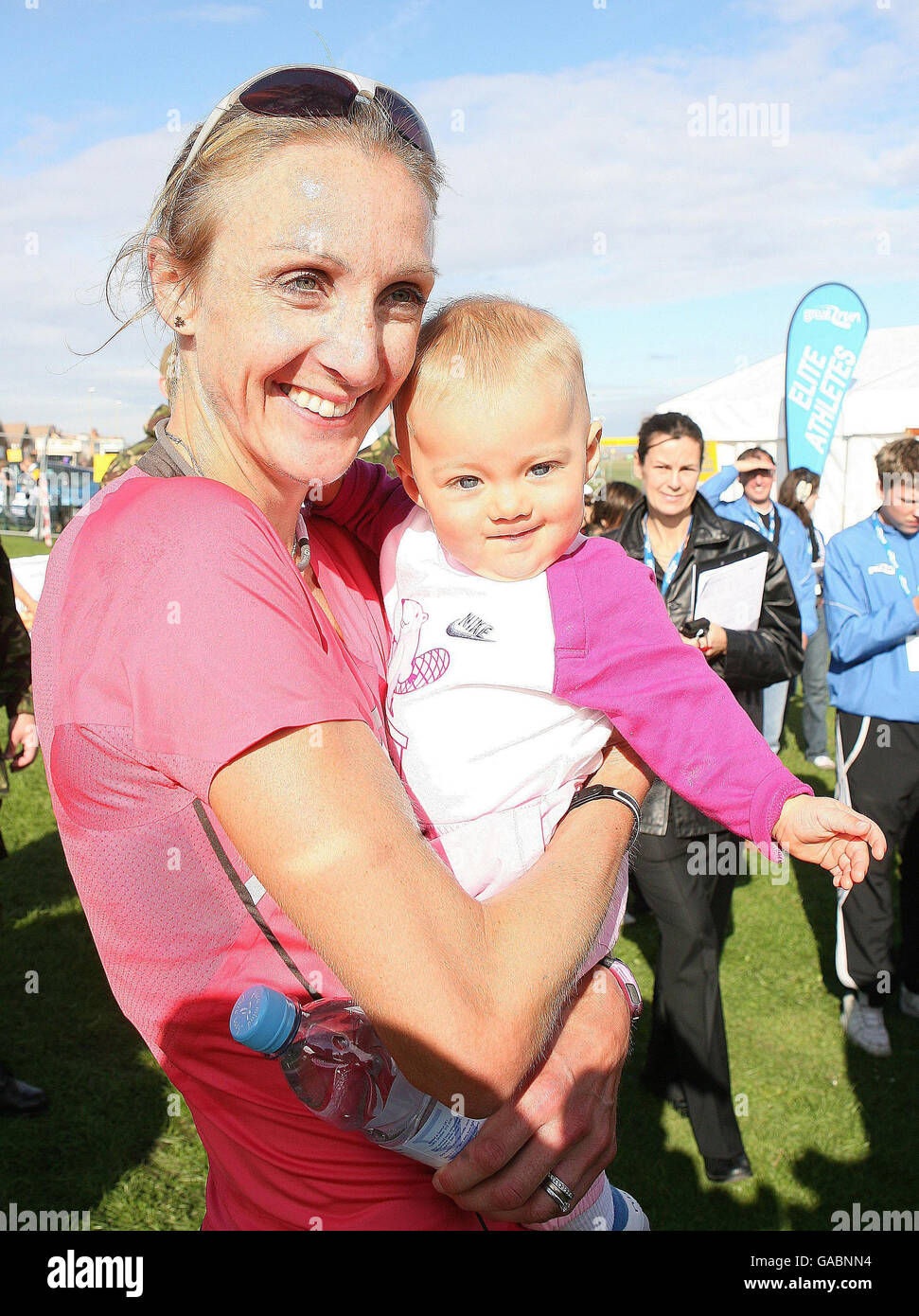Paula Radcliffe Daughter Illness: A Closer Look At The Story That Touched Hearts
When it comes to the world of sports, Paula Radcliffe’s name is iconic. But beyond her achievements, her personal life has faced challenges that many might not know about. Recently, the topic of Paula Radcliffe daughter illness has sparked conversations worldwide. In this article, we’ll dive deep into the story, the facts, and the emotions behind it. So, if you’re curious about what happened and how it unfolded, buckle up for an insightful journey.
Paula Radcliffe, the marathon queen, has always been in the spotlight for her incredible performances. However, life outside the track isn’t always a smooth run. Her daughter, Isla, has been at the center of a heartwarming yet challenging story that resonates with many parents around the globe. Today, we’re shedding light on this sensitive topic with care and respect.
This article aims to provide a detailed exploration of Paula Radcliffe daughter illness, offering a balanced view of the situation while respecting privacy. We’ll also touch on how Paula and her family have navigated these challenges, offering inspiration to those who might be facing similar struggles.
Read also:Discover Chanel West Coast Net Worth Age And Personal Life 2023
Biography of Paula Radcliffe
Early Life and Career Highlights
Paula Radcliffe was born on December 7, 1963, in Tonbridge, Kent, England. Her journey in athletics began at a young age, and by the time she reached her teenage years, it was clear that she was destined for greatness. Paula’s career highlights include breaking world records in the marathon and earning multiple medals in international competitions.
Her dedication to the sport has earned her a place among the legends of athletics. But beyond the accolades, Paula is also a devoted mother and wife. Let’s take a closer look at her personal life, particularly focusing on her family.
| Full Name | Paula Susan Radcliffe |
|---|---|
| Date of Birth | December 7, 1963 |
| Place of Birth | Tonbridge, Kent, England |
| Spouse | Gary Lough |
| Children | Isla and Raphael |
Understanding Paula Radcliffe Daughter Illness
What Happened to Isla?
Paula Radcliffe daughter illness became a topic of discussion when her daughter, Isla, was diagnosed with a rare condition. Isla, who was born in 2002, has been living with Turner Syndrome, a genetic condition that affects females. This condition occurs when one of the X chromosomes is missing or partially missing, leading to various health challenges.
Turner Syndrome can impact physical development and may require ongoing medical care. For Paula and her family, this diagnosis was a turning point, but they faced it with resilience and determination.
Turner Syndrome: The Basics
What You Need to Know
Turner Syndrome affects approximately 1 in 2,500 female births worldwide. Symptoms can vary, but common features include short stature, delayed puberty, and potential heart and kidney issues. Early diagnosis and treatment are crucial for managing the condition effectively.
Some of the key aspects of Turner Syndrome include:
Read also:Unlocking The Potential Of Hsoda030 A Comprehensive Guide
- Short stature due to growth hormone deficiency
- Delayed or absent puberty
- Heart and kidney abnormalities
- Learning difficulties in some cases
- Increased risk of hearing loss
While the condition presents challenges, many individuals with Turner Syndrome lead fulfilling lives with the right support and care.
How Paula Radcliffe Handled the Diagnosis
Strength in Adversity
When Paula first learned about her daughter’s condition, she approached it with the same determination she brings to her athletic career. She worked closely with medical professionals to ensure Isla received the best possible care. Paula also became an advocate for raising awareness about Turner Syndrome, using her platform to educate others.
Her openness about Isla’s condition has inspired countless parents facing similar situations. Paula’s story serves as a reminder that challenges can be overcome with love, support, and perseverance.
Impact on Family Life
Balancing Sports and Parenthood
As a mother and a professional athlete, Paula Radcliffe faced the unique challenge of balancing her career with her family’s needs. Her commitment to Isla’s well-being never wavered, even as she continued to compete at the highest levels. Paula’s husband, Gary Lough, played a crucial role in supporting the family during this time.
Their ability to navigate these challenges together highlights the importance of teamwork and communication in family life. For Paula, her daughter’s health always came first, and she made adjustments to her schedule to ensure Isla received the care she needed.
Raising Awareness About Turner Syndrome
Paula’s Advocacy Work
Paula Radcliffe’s advocacy for Turner Syndrome awareness has been instrumental in bringing attention to the condition. Through interviews, public appearances, and partnerships with organizations, she has worked tirelessly to educate others about the challenges faced by individuals with Turner Syndrome.
Her efforts have helped reduce stigma and promote understanding, encouraging families to seek early diagnosis and treatment. Paula’s story is a testament to the power of using one’s platform for positive change.
Medical Advances and Treatment Options
Hope for the Future
Thanks to advancements in medical science, treatment options for Turner Syndrome have improved significantly. Growth hormone therapy, estrogen replacement therapy, and regular monitoring of heart and kidney function are just a few of the interventions available to manage the condition.
Early intervention is key, and Paula’s proactive approach to Isla’s care has made a significant difference in her daughter’s life. With ongoing research and developments, the future looks brighter for individuals with Turner Syndrome.
Emotional Journey of a Parent
Lessons from Paula’s Experience
Beyond the medical aspects, Paula’s journey with Isla has been an emotional one. As a parent, she has experienced a range of emotions, from worry and fear to hope and pride. Her ability to remain positive and focused has been a source of inspiration for many.
Paula often emphasizes the importance of embracing each day and cherishing the moments with loved ones. Her story reminds us that challenges can strengthen our relationships and help us grow in unexpected ways.
Support Systems and Resources
Where to Turn for Help
For families dealing with Turner Syndrome, having access to reliable resources and support systems is crucial. Organizations such as the Turner Syndrome Society and the National Organization for Rare Disorders (NORD) offer valuable information and assistance.
Additionally, connecting with other families who have experienced similar challenges can provide emotional support and practical advice. Paula’s advocacy has helped create a community where parents can share their experiences and learn from one another.
Conclusion
In conclusion, the story of Paula Radcliffe daughter illness is one of resilience, love, and determination. Paula’s journey with Isla has not only impacted her family but also raised awareness about Turner Syndrome worldwide. By sharing her experiences, Paula has inspired countless individuals to face their own challenges with courage and hope.
We invite you to join the conversation by leaving a comment or sharing this article with others who might benefit from it. Together, we can continue to support and uplift families facing similar situations.
Table of Contents
- Biography of Paula Radcliffe
- Understanding Paula Radcliffe Daughter Illness
- Turner Syndrome: The Basics
- How Paula Radcliffe Handled the Diagnosis
- Impact on Family Life
- Raising Awareness About Turner Syndrome
- Medical Advances and Treatment Options
- Emotional Journey of a Parent
- Support Systems and Resources
- Conclusion
As we wrap up this article, remember that stories like Paula’s remind us of the strength and resilience within all of us. Whether you’re a parent, a caregiver, or simply someone who cares, let’s continue to support one another in creating a world where everyone can thrive.


